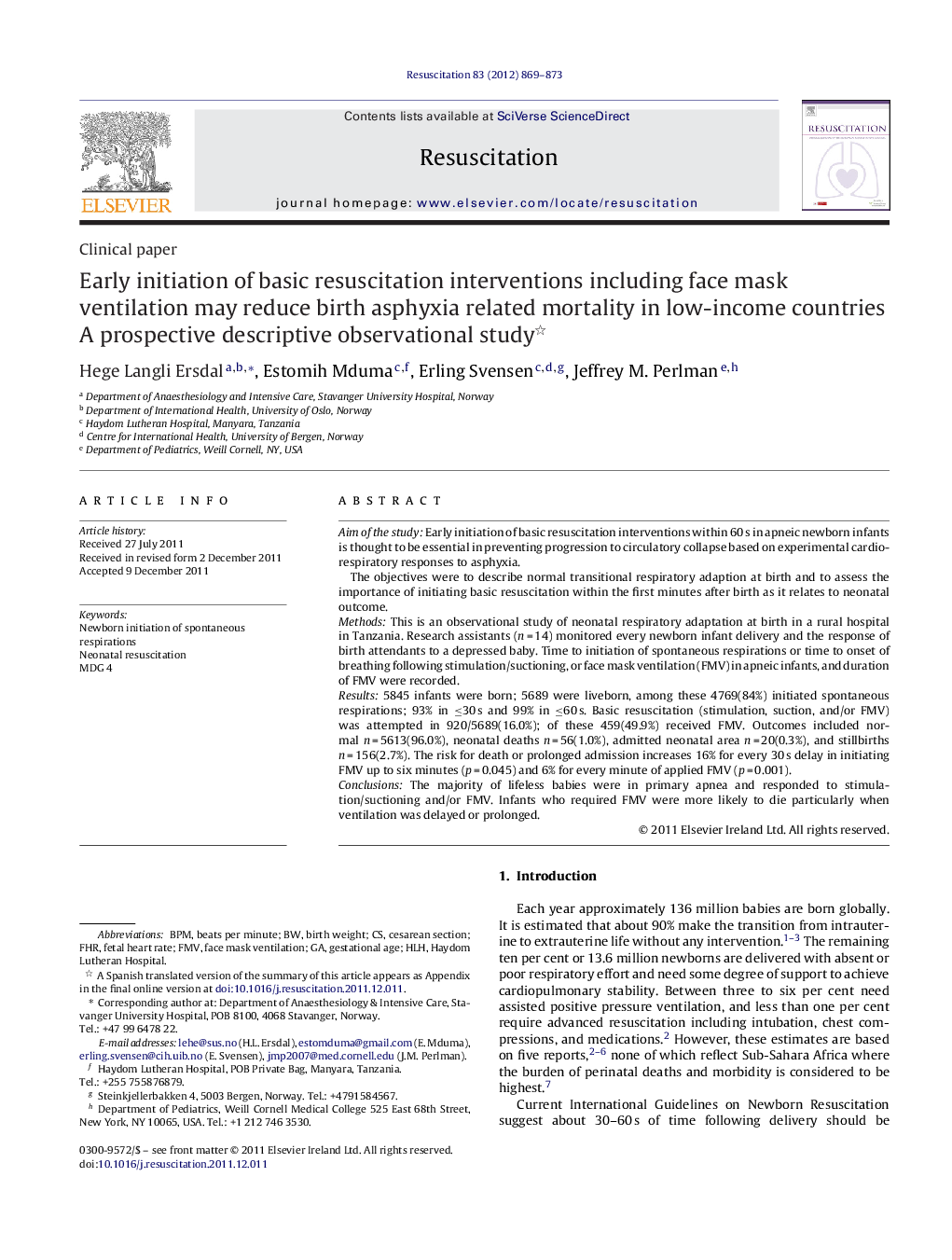| کد مقاله | کد نشریه | سال انتشار | مقاله انگلیسی | نسخه تمام متن |
|---|---|---|---|---|
| 3008846 | 1181467 | 2012 | 5 صفحه PDF | دانلود رایگان |

Aim of the studyEarly initiation of basic resuscitation interventions within 60 s in apneic newborn infants is thought to be essential in preventing progression to circulatory collapse based on experimental cardio-respiratory responses to asphyxia.The objectives were to describe normal transitional respiratory adaption at birth and to assess the importance of initiating basic resuscitation within the first minutes after birth as it relates to neonatal outcome.MethodsThis is an observational study of neonatal respiratory adaptation at birth in a rural hospital in Tanzania. Research assistants (n = 14) monitored every newborn infant delivery and the response of birth attendants to a depressed baby. Time to initiation of spontaneous respirations or time to onset of breathing following stimulation/suctioning, or face mask ventilation (FMV) in apneic infants, and duration of FMV were recorded.Results5845 infants were born; 5689 were liveborn, among these 4769(84%) initiated spontaneous respirations; 93% in ≤30 s and 99% in ≤60 s. Basic resuscitation (stimulation, suction, and/or FMV) was attempted in 920/5689(16.0%); of these 459(49.9%) received FMV. Outcomes included normal n = 5613(96.0%), neonatal deaths n = 56(1.0%), admitted neonatal area n = 20(0.3%), and stillbirths n = 156(2.7%). The risk for death or prolonged admission increases 16% for every 30 s delay in initiating FMV up to six minutes (p = 0.045) and 6% for every minute of applied FMV (p = 0.001).ConclusionsThe majority of lifeless babies were in primary apnea and responded to stimulation/suctioning and/or FMV. Infants who required FMV were more likely to die particularly when ventilation was delayed or prolonged.
Journal: Resuscitation - Volume 83, Issue 7, July 2012, Pages 869–873